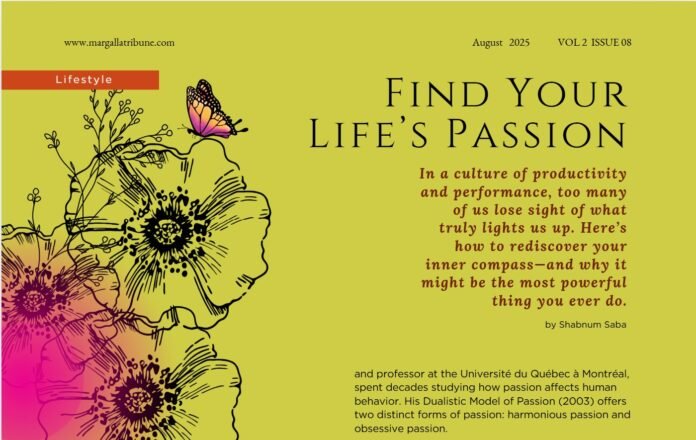In a culture of productivity and performance, too many of us lose sight of what truly lights us up. Here’s how to rediscover your inner compass—and why it might be the most powerful thing you ever do.
Before passion became a modern self-help mantra, it was a philosophical inquiry since ancient times.
In Plato’s Republic, Plato compared the soul to a person driving a chariot pulled by two flying horses. One horse embodies your higher self, graceful, radiant, drawn to love, truth, and the light of spiritual awakening. The other, shadowed and restless, is the embodiment of your primal urges and emotional turbulence. In between them sits the charioteer, your awakened mind tasked with balancing these opposing forces. This metaphor reflects Plato’s idea of the soul’s internal struggle between rational thought, moral aspiration, and irrational desire. In other words, passion without direction leads to chaos, but passion guided by purpose can elevate the self and society.
What Modern Psychology Reveals
Today, neuroscience offers further validation. Dr. Robert J. Vallerand, a leading Canadian psychologist and professor at the Université du Québec à Montréal, spent decades studying how passion affects human behavior. His Dualistic Model of Passion (2003) offers two distinct forms of passion: harmonious passion and obsessive passion.
In one major study, athletes with harmonious passion felt happier and had fewer conflicts between their sport and personal lives. In the workplace, people with harmonious passion were more motivated, resilient, and ethical. In relationships, it helped build deeper, healthier bonds.
In contrast, obsessive passion led to guilt, jealousy, and anxiety, whether at work, in love, or while learning. These studies show that how we pursue our passion matters just as much as what we’re passionate about.
Ikigai: A Map for the Meaning-Seeker
The Japanese concept of Ikigai, meaning “a reason for being,” offers a holistic framework for living a meaningful and balanced life. It lies at the intersection of four key questions: What do you love? What are you good at? What does the world need? And what can you be paid for? When these elements align, they create a sense of deep purpose and fulfillment. At the heart of Ikigai is passion—the meeting point between what you love and what you’re naturally good at. This is often the most accessible entry point into the Ikigai journey. Rather than focusing solely on career success, Ikigai includes personal joy, community contribution, and daily rituals that bring a sense of satisfaction and inner peace.
Ikigai is not a destination but a living practice that evolves with time, experience, and changing life stages. In Okinawan culture, where the concept originates, Ikigai is found as much in simple pleasures and relationships as in professional roles. By beginning with your passion and nurturing it with intention, you gradually align with greater meaning and impact. Ikigai reminds us of mindful choices.
Your Personality, Your Path: The DISC Framework
The DISC Personality Model, developed by psychologist William Moulton Marston, offers a practical lens through which we can understand both our behavior and what ignites our passion. It breaks down human behavior into four dominant personality styles,
Dominance (D), Influence (I), Steadiness (S), and Conscientiousness (C) are based on two core spectrums: Outgoing vs. Reserved and Task-Oriented vs. People-Oriented.
This framework helps individuals identify how they naturally operate in the world, make decisions, solve problems, and interact with others. Recognizing your DISC type can be an eye-opening step toward understanding why certain tasks and environments energize or drain you. Each type has its own passion zone:
D – types excel in fast-paced leadership roles;
I – types flourish in expressive, people-driven environments;
S – types thrive in caring, stable settings; and
C – types shine in detail-oriented, analytical work.
No type is superior; each contributes uniquely to the ecosystem of a healthy team or workplace. The key takeaway is this: you don’t need to change your personality to find passion; you need to align your passion with your personality.
Why We Resist What We Want: The Invisible Barriers Within
Even when we know what we want—and even when the path is clear, many of us still hesitate to move forward. The tools may be in our hands, the passion may be alive in our hearts, and the opportunity may be knocking, but we remain frozen. This resistance often has little to do with external obstacles. Instead, it stems from invisible inner walls: beliefs, emotions, and patterns deeply rooted in our psyche.
Three of the most common internal barriers are:
- Fear of Failure: This fear is often fed by past disappointments or perfectionist tendencies that say, “If I can’t do it perfectly, I shouldn’t do it at all.”
- Guilt Over Putting Oneself First: Especially in cultures and households where self-sacrifice is praised, choosing your own path can feel selfish. This is particularly common among caregivers, parents, and those conditioned to prioritize others’ needs over their own. The pursuit of personal passion can come with a silent fear of being judged or misunderstood.
- Deep-Seated Self-Doubt: Perhaps the most insidious of all, self-doubt whispers, “We’re not talented enough, not ready, not deserving”. Often, these beliefs are not even ours—they’re inherited from childhood, or societal conditioning.
The Voices Around You and Within You
Pursuing your passion may invite criticism. Even loved ones can become skeptics. But history reminds us: Every meaningful pursuit begins in solitude. Let them doubt. What matters is that you don’t.
Focus your energy not on explaining yourself to critics—but on walking with those who believe in your vision.
The author can be contacted at dew.saba@gmail.com






